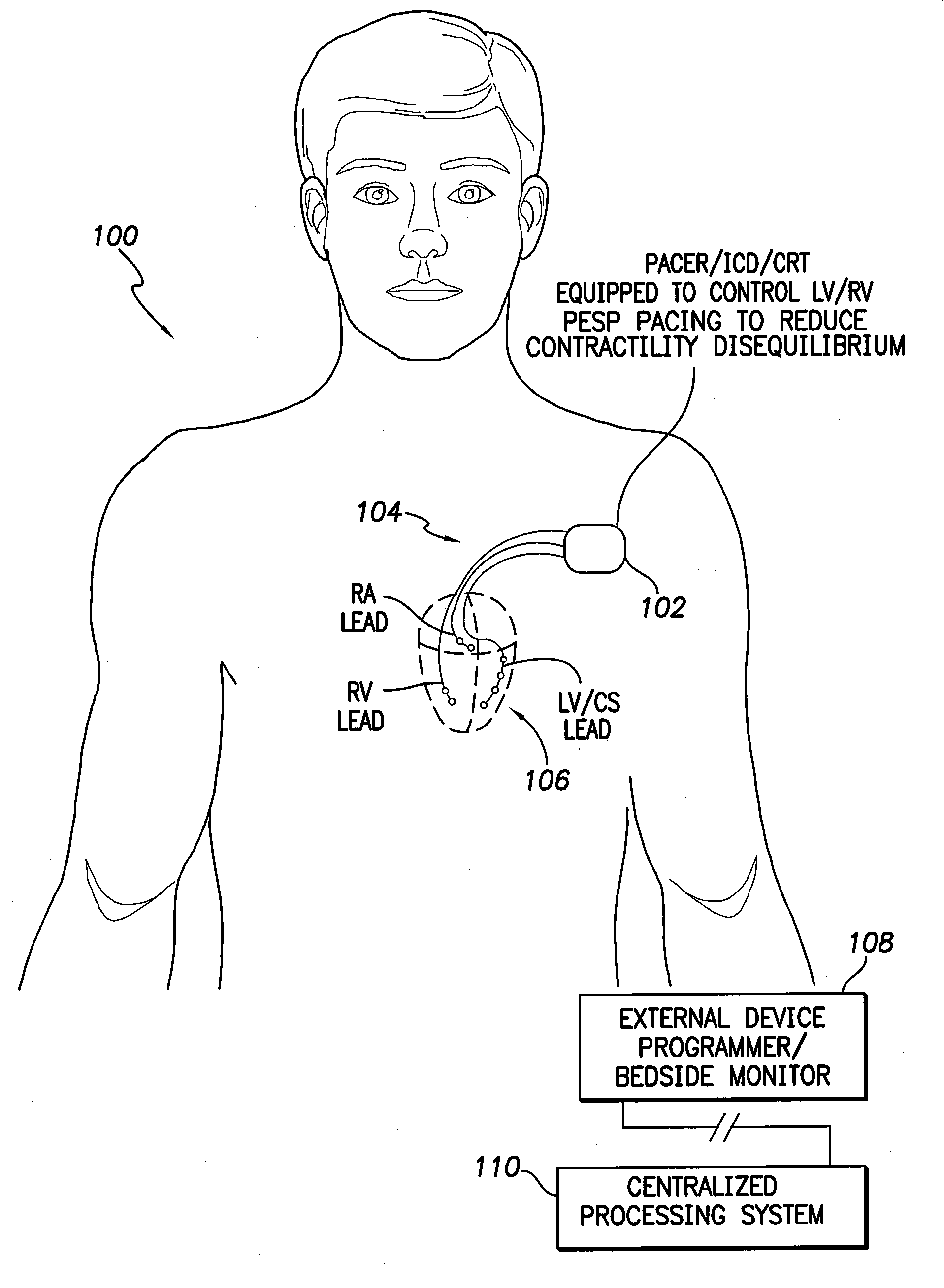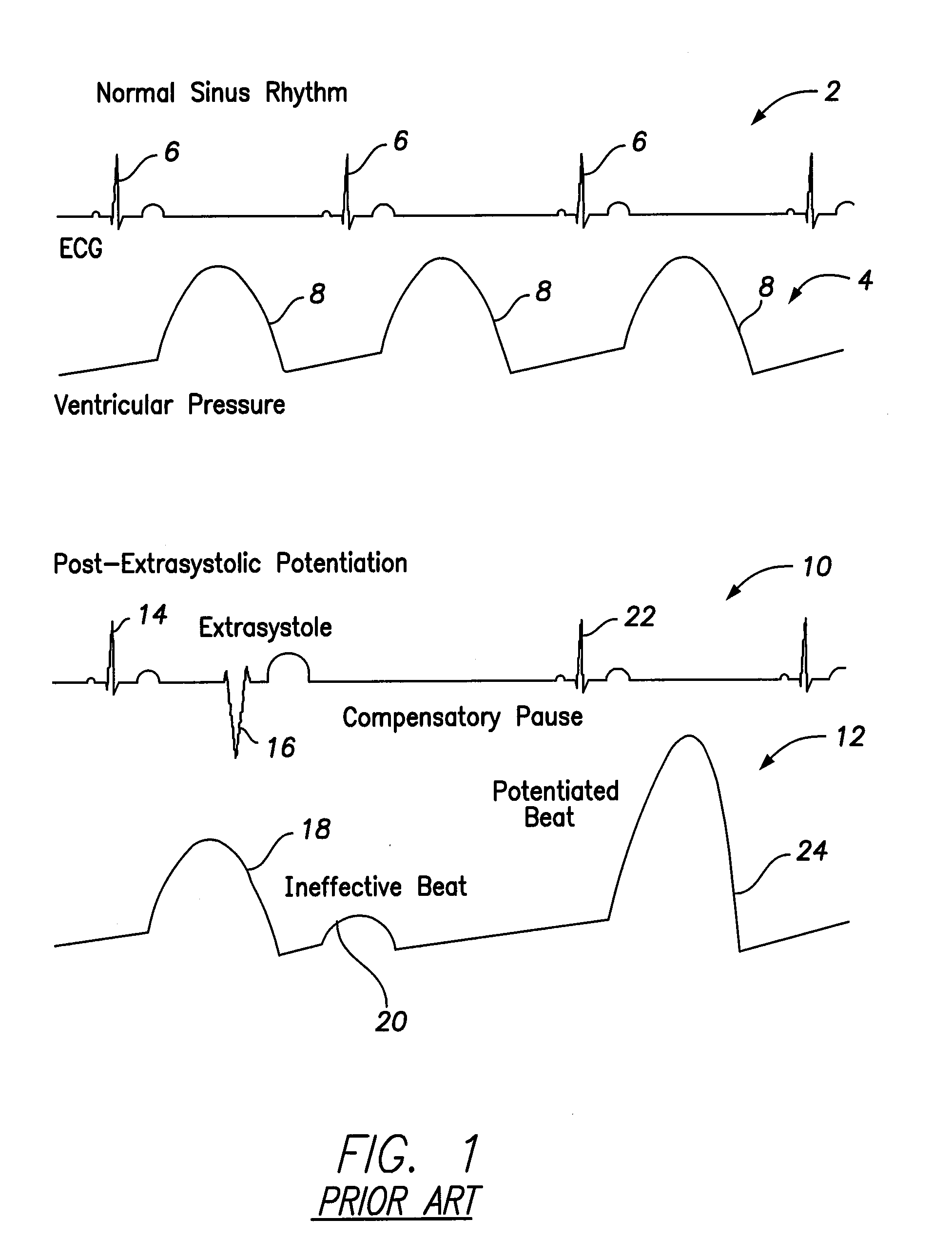Systems and methods for controlling paired pacing interpulse intervals to reduce contractility disequilibrium using an implantable medical device
a medical device and paired pacing technology, applied in the direction of electrotherapy, heart stimulators, therapy, etc., can solve the problems of inadequate blood flow to meet the needs of tissues, heart failure, and loss of propulsive power, so as to improve the balance of contractility, increase the left atrial pressure (lap), and improve the effect of cardiac contractility
- Summary
- Abstract
- Description
- Claims
- Application Information
AI Technical Summary
Benefits of technology
Problems solved by technology
Method used
Image
Examples
Embodiment Construction
[0034]The following description includes the best mode presently contemplated for practicing the invention. This description is not to be taken in a limiting sense but is made merely to describe general principles of the invention. The scope of the invention should be ascertained with reference to the issued claims. In the description of the invention that follows, like numerals or reference designators will be used to refer to like parts or elements throughout.
Overview of Implantable System and Method
[0035]FIG. 3 illustrates an implantable medical system 100 capable of delivering paired PESP pacing while separately controlling the LV and RV interpulse intervals to reduce contractility disequilibrium, particularly for use within patients with one ventricle weakened by ischemia or CHF. In this particular example, the implantable medical system 100 includes a pacer / ICD / CRT 102 or other implantable cardiac rhythm management device equipped with a set of cardiac sensing / pacing leads 104...
PUM
 Login to View More
Login to View More Abstract
Description
Claims
Application Information
 Login to View More
Login to View More - R&D
- Intellectual Property
- Life Sciences
- Materials
- Tech Scout
- Unparalleled Data Quality
- Higher Quality Content
- 60% Fewer Hallucinations
Browse by: Latest US Patents, China's latest patents, Technical Efficacy Thesaurus, Application Domain, Technology Topic, Popular Technical Reports.
© 2025 PatSnap. All rights reserved.Legal|Privacy policy|Modern Slavery Act Transparency Statement|Sitemap|About US| Contact US: help@patsnap.com



